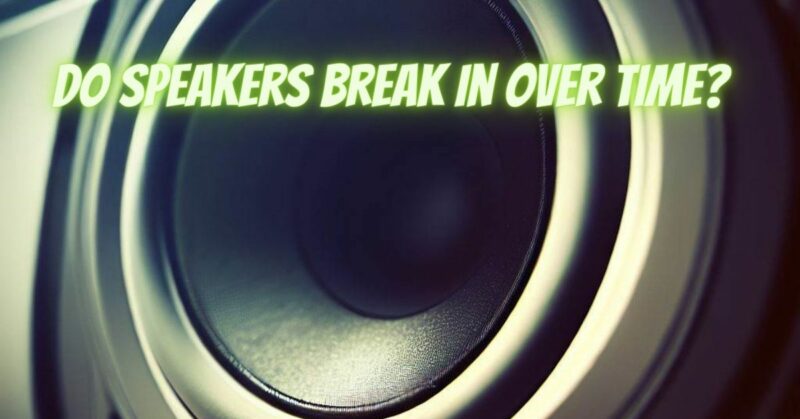The world of audio equipment is rife with myths and misconceptions, and one of the enduring beliefs is that speakers break in and improve over time. Audiophiles and enthusiasts often debate whether a speaker’s sound quality undergoes noticeable changes as it ages. In this article, we will explore the concept of speaker break-in, examine the science behind it, and determine whether speakers truly change and improve with time.
Understanding Speaker Components
To grasp the concept of speaker break-in, it’s important to understand the key components of a speaker:
- Cone and Surround: The cone is the diaphragm that moves air to produce sound, while the surround connects the cone to the speaker frame, allowing it to move. These components are often made of materials like paper, rubber, or foam.
- Voice Coil: The voice coil is a coil of wire attached to the diaphragm. It interacts with the magnetic field created by the speaker’s magnet, causing the diaphragm to move and produce sound.
- Magnet and Motor Assembly: The magnet and motor assembly generate the magnetic field necessary for the voice coil to function.
- Suspension (Spider): The suspension, often referred to as the spider, provides support for the voice coil, allowing it to move back and forth.
The Myth of Speaker Break-In
The belief in speaker break-in suggests that as speakers are used over time, their components become more flexible, resulting in improved sound quality. Proponents argue that speakers need time to “loosen up” or “settle in” to achieve their full potential. This concept is often applied to both new speakers and old ones that have been unused for a while.
Scientific Perspective on Speaker Break-In
From a scientific standpoint, the concept of speaker break-in is somewhat contentious. While there may be minor changes in a speaker’s performance over time, they are typically subtle and not universally agreed upon among experts. Here are some reasons for skepticism:
- Materials and Design: High-quality speakers are designed and engineered to provide optimal performance right from the start. The materials used are chosen for their durability and consistency, reducing the need for a break-in period.
- Limited Evidence: Scientific studies and controlled experiments examining speaker break-in have not consistently demonstrated significant improvements in sound quality. Any changes that do occur are often within the range of listener subjectivity.
- Psychological Bias: The perception that speakers improve with age may be influenced by psychological bias and the belief that older equipment sounds better, even if the changes are minimal or nonexistent.
While some enthusiasts claim to notice improvements in speaker performance over time, the concept of speaker break-in remains a matter of debate. Scientific evidence supporting the idea is limited, and many high-quality speakers are designed to provide optimal performance right out of the box.
When purchasing speakers, it’s advisable to focus on factors like design, specifications, and user reviews rather than relying on the idea that they will significantly improve with age. Modern speaker technology has made significant advancements, and many newer models offer exceptional sound quality from the moment they are used. Ultimately, the perceived improvement in sound quality may be more a product of listener expectation and subjectivity than an objective change in the speakers themselves.


